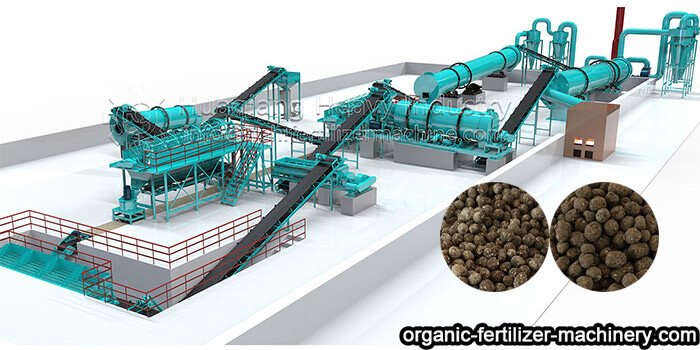In a bio-organic fertilizer production line, the granulation process is the core link between semi-finished and finished products, directly determining the product's appearance, stability, and application experience. It can be called the "shaping master" of the production line. Compared to powdered organic fertilizers, granular products not only avoid dust and clumping during transportation, but also precisely control the rate of nutrient release, meeting the needs of efficient fertilization in modern agriculture. Therefore, granulation is a key step in enhancing product market competitiveness.

Currently, the commonly used granulation technologies in bio-organic fertilizer production lines are mainly divided into extrusion granulation and disc granulation. Extrusion granulation relies on a double roller press granulator to force the fermented material through a die to form cylindrical granules. Its advantages include the absence of additional binders, maximum preservation of beneficial bacterial activity, and high granule hardness, making it suitable for large-scale continuous production. Disc granulator, on the other hand, uses a tilted, rotating disc to naturally aggregate the material into spherical granules, leveraging its own viscosity and a small amount of water. The resulting product is round and uniform, dissolves quickly, and is therefore more popular among cash crop growers. The production line will select the appropriate granulation process based on raw material characteristics (such as moisture content and organic matter content) and market demand.
Controlling granulation quality focuses on three key elements: First, raw material pretreatment is fundamental. Secondary crushing is required to ensure a fineness of 80 mesh or higher, while moisture is controlled at 25%-30% to prevent loose granules or sticking to the die. Second, equipment parameter adjustment is crucial. Extrusion granulation requires precise control of screw speed and die diameter, while disc granulation requires adjustment of the disc inclination angle (usually 45°-55°) and speed to ensure uniform granule size (generally 2-4mm). Third, microbial inoculant protection is crucial. During granulation, the equipment temperature must be controlled above 60°C to prevent high temperatures from killing beneficial bacteria. Some high-end production lines also incorporate a low-temperature microbial inoculant spraying step after granulation to further enhance the product's bioactivity.
As the "value-added link" of the bio-organic fertilizer production line, granulation process optimization consistently keeps pace with industry developments. Today, more and more production lines are incorporating intelligent control systems. These sensors monitor particle size, hardness, and other indicators in real time, automatically adjusting equipment parameters and enabling precise management of the granulation process. This continuous improvement not only propels bio-organic fertilizers from "qualified products" to "high-quality products," but also helps green agriculture achieve its development goals of improving quality and efficiency.